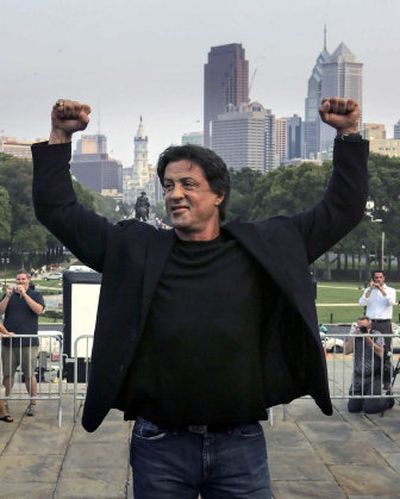Stallone doesn’t pull any punches

People laughed when Sylvester Stallone started shopping the idea for a “Rocky VI” to studio execs. Indeed, several of the execs did their best to talk him out of the idea for his own good. “Rocky V,” the 1990 film that was originally intended to be the final installment of the boxing film series, was lambasted by critics and bombed at the box office.
But to paraphrase Little Maria — Rocky fans will remember her as the girl who called Rocky a “creepo” in the original film — it didn’t matter to Stallone how it looked to other people. This was something Stallone needed to do, so he did it.
“Fighters fight,” Maria, now a bartender in South Philadelphia, tells Rocky in the film, a huge box-office hit that has raked in more than four times as much as the studios hoped for. And if you’re a fan of the sweet science, you’ll love this movie.
Sure, there are scenes and monologues that are cheesier than a Philly steak, but who cares? This is Rocky we’re talking about. This is Americana at its best. This is the film that gave us the true underdog story, characters like Adrian and Paulie Pennino, Mickey Goldmill, Apollo Creed and Clubber Lang. This is the film that gave us “Eye of the Tiger,” fostered a mid-‘80s comeback for James Brown and provided the soundtrack for every weekend warrior on the planet — Bill Conti’s “Gonna Fly Now.”
Where this installment really shines is in the accurate portrayal of “former pugs,” the post-glory days of boxing champions. While the original “Rocky” was based on Muhammad Ali and his epic 15-round fight against club boxer Chuck Wepner, “Rocky Balboa” draws more on the real-life stories of former champs Rocky Graziano, Jake LaMotta (the “Raging Bull”) and, most importantly, Rocky Marciano.
All but forgotten today, in 1969, when Ali was forced to sit out of boxing for three years, an exhibition was staged between Ali and Marciano, who was 46 years old and, like Balboa’s character in the film, a restaurateur making a comfortable living. The exhibition was staged, but a computer simulation was used to pick the winner, and Marciano was declared the victor.
The same premise occurs in “Rocky Balboa,” when a computer simulation chooses Balboa over the current champion, Mason Dixon (played by former light heavyweight champion Antonio Tarver).
The use of actual HBO commentators and familiar Pay-Per-View camera angles make the fight scenes of “Rocky Balboa” perhaps the greatest ever filmed, even though there were numerous fouls committed and so many knockdowns, the fight would definitely have been stopped.
In all, the film offers a nostalgic and supremely fitting end to the franchise, a tribute not only to Stallone’s characters but to the sport of boxing itself.